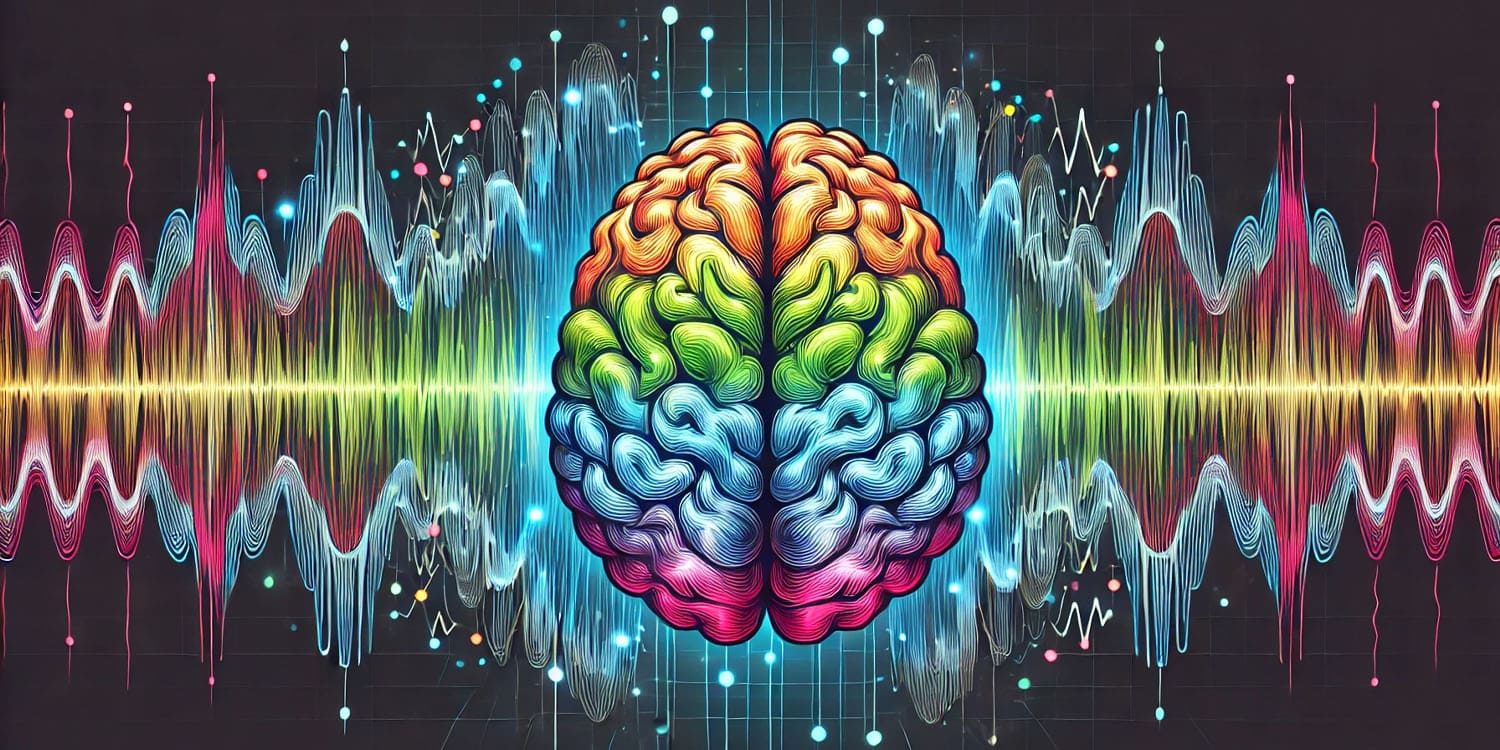A recent study published in the journal Brain and Cognition has found that creativity is linked with a reduced brain response to unusual, or “oddball,” stimuli. This suggests that creative individuals process the importance of surprising information differently, which may help explain their unique thinking patterns. This diminished brain response might enable creative individuals to access a broader range of information.
Creativity has often been associated with a wide focus of attention, sometimes leading to an interest in information that may not seem relevant at first glance. This characteristic has been thought to arise from a lack of cognitive control. However, the researchers behind this study proposed a different explanation: that creative individuals might process the importance, or salience, of information in an atypical way.
Salience processing is the brain’s way of highlighting what information is noteworthy and should be prioritized. This process can make certain pieces of information stand out, guiding attention and motivating behavior. By examining how creative people process salient information, the researchers aimed to uncover a fundamental mechanism that could explain the unique attentional patterns observed in creative individuals.
“Have you ever noticed that creative people often notice details that others overlook? This question drives my interest in exploring whether creative people process and prioritize sensory information differently,” said study author Madeleine E. Gross, an assistant project scientist at the META (Memory Emotion Thought Awareness) lab at the University of California, Santa Barbara.
To explore this idea, the researchers conducted two studies. The first study used a classic task to examine how the brain responds to surprising information, while the second study looked at how creative people process rewards in their everyday lives.
The first study involved 51 participants from the University of California, Santa Barbara. Participants were asked to complete a task that measured creativity, called the Incomplete Figures Task. In this task, they were given a few simple lines and asked to create drawings from them within 10 minutes.
Participants then performed an oddball task while wearing an electroencephalogram (EEG) cap to measure brain activity. In this task, they were presented with a series of images, mostly of rocks, with occasional images of apples (the oddball stimuli) appearing less frequently. When an apple appeared, it was accompanied by a sound. The researchers measured the participants’ brain responses to these oddball stimuli, specifically looking at a brainwave called the P300, which is known to reflect how surprising or significant a stimulus is.
The EEG data showed that creative individuals had a significantly reduced P300 response to the oddball stimuli. This suggests that their brains did not find these surprising stimuli as noteworthy as the brains of less creative individuals. In other words, creative people might under-attribute importance to stimuli that are typically considered surprising.
“When tackling a creative problem, we often get stuck on the ‘obvious’ aspects, making it challenging to think outside the box and notice unusual elements within the problem space,” Gross told PsyPost. “Our study found that creative individuals do not perceive unusual information as odd; they process it similarly to typical information.”
“This may enhance creative thinking by making it more likely that unconventional details are noticed and considered, providing a fresh perspective during the creative process. In other words, creative individuals may not be confined by conventional boundaries because they don’t distinguish between odd and typical in the same way.”
In the second study, 200 participants completed a different creativity task called the Alternate Uses Task, where they had to think of creative uses for a common object, such as a cardboard box. They also completed a series of questions about everyday activities, rating how much they enjoyed these activities, how often they thought about them, and how much they wanted to do them again. This setup allowed the researchers to examine the relationship between how much participants enjoyed an activity (liking), how much they thought about it spontaneously (positive spontaneous thoughts), and how much they wanted to do it again (wanting).
The results revealed that creativity influenced how participants processed rewards. Creative individuals were generally more motivated to pursue various activities, showing a higher overall desire to engage in potentially rewarding activities. However, their motivation (wanting) was less tied to how much they enjoyed these activities (liking) compared to less creative individuals. This pattern suggests that creative people might assign motivational importance to a broader range of activities, not just those they find enjoyable.
“One surprising finding was the relationship between creativity and the concepts of liking versus wanting,” Gross explained. “We used a psychological task that has been used before to study schizotypy, a personality trait associated with eccentric ideas, unusual beliefs, and perceptual anomalies. The task measures how much pleasure people get from an activity (‘liking’) and how much they desire to engage in that activity (‘wanting’).”
“Previous research found that for people scoring high in schizotypy, there was a weak connection between liking and wanting. In other words, they might not want to do something just because they like it. Since schizotypy and creativity have been linked before, we expected to see a similar result with creative individuals. However, our findings showed that creative people had, overall, increased wanting, which could reflect a higher motivational drive. Unlike schizotypes, this drive was positively related to liking, meaning that the more they liked an activity, the more they wanted to engage in it.”
The findings provide evidence that more creative individuals process information differently, particularly when it comes to assessing what is noteworthy or motivationally significant.
“Our findings suggest that creative individuals pay attention differently, focusing on different aspects of their environment,” Gross said. “Past research has linked creativity to differences in attention, including relationships between creativity and ADHD, broad or unfocused attention, and so-called ‘leaky’ attention, where irrelevant information distracts but also reveals unconventional details.”
“Consistent with this, we propose that creative individuals have an atypical style of salience attribution, the process by which information is assigned meaningfulness, attention-worthiness, or motivational relevance. If creative people vary in how they assign “salience”, or meaning, to information, it may drive significant differences in what they pay attention to and draw inspiration from.”
But the study, like all research, includes some caveats. For instance, the study focused on a specific type of creativity measured in a controlled environment. Future research could explore whether these findings generalize to different forms of creativity and more diverse populations.
“When it comes to creativity, there are two distinct — even opposing — attentional profiles,” Gross told PsyPost. “One profile is the ‘leaky’ attention we’ve been discussing: a broad and distractible attentional style. This kind of attention allows individuals to notice unusual things and is linked to real-life creative achievements, especially in artistic domains. Real-life creativity may be better supported by leaky attention, which itself we suggest is underpinned by atypical salience assignment, because it encourages people to explore, and get inspiration from, unconventional ideas and stimuli: to find meaning in the unusual.”
“On the other hand, some forms of creativity are linked to an opposing attentional profile: focused and flexible attention. If the previous style can be thought of as ‘leaky,’ this profile can be considered ‘watertight.’ In this case, the spotlight of attention is highly controlled, and distractions are easily inhibited. This attentional style is a better predictor of the types of creativity measured in controlled laboratory contexts, where participants are asked to generate as many ideas as possible, in a limited time, in response to a given prompt. Success in these tasks requires focused attention and the ability to block out distractions, making a ‘watertight’ attentional style more beneficial.”
“Because of this nuance in the relationship between attention and creativity, it is crucial to consider the types of creativity being discussed.”
Nevertheless, the findings open new avenues for exploring the neural and psychological mechanisms underlying creativity, with potential implications for enhancing creative thinking through targeted interventions.
“The long term goals are plentiful! Based on our findings, we have presented a theoretical framework to explain why the brains of creative individuals seem to prioritize information differently,” Gross explained. “However, the evidence so far is correlational. We’re excited about the possibility of manipulating salience processes in order to examine whether we can promote creativity.”
“For example, certain contexts may encourage atypical salience processing — such as aesthetic experiences involving exposure to unconventional art or even the use of cannabis. It would be very interesting to experimentally examine whether aesthetic experiences or cannabis use can drive artistic forms of creativity via its impact on salience processing. These are some of the exciting future directions we hope to realize one day.”
The study, “Why creatives don’t find the oddball odd: Neural and psychological evidence for atypical salience processing,” was authored by Madeleine E. Gross, James C. Elliott, and Jonathan W. Schooler.




